Production Systems
PRODUCTION SYSTEMS
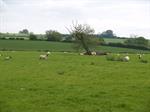 Farms grow animals or plants. At a certain stage of growth, produce is obtained from the animal or plant, sometimes by killing the organism (e.g. to obtain meat), and sometimes removing something (e.g. eggs, fruit, wool, etc.), without killing the organism.
Farms grow animals or plants. At a certain stage of growth, produce is obtained from the animal or plant, sometimes by killing the organism (e.g. to obtain meat), and sometimes removing something (e.g. eggs, fruit, wool, etc.), without killing the organism.
For most farm products, there are different ways of producing the "final product" (i.e. different production systems).
Examples:
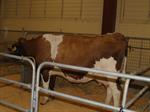 Meat or plants may be grown fast or slow (quality and tenderness of food may be affected by speed of growth).
Meat or plants may be grown fast or slow (quality and tenderness of food may be affected by speed of growth).- Most things (e.g. meat, fruit, wheat, etc.), can be grown in a natural situation with minimum human intervention; or a more unnatural situation, with greater human intervention.
- Produce may be grown on a small scale, or on a large scale.
- Systems can be monocultures (producing one thing only) or polycultures (where different animals and plants are integrated so that different products are taken from the same enterprise).
- Some systems are more labour intensive, while others (e.g. mechanised systems) may be more manageable.
- Land-care considerations may restrict the systems available (e.g. to prevent land degradation, it may be necessary to use a particular type of system).
- Generally, polycultures are less likely to cause land degradation.
CHOOSING A PRODUCTION SYSTEM
Why choose one system rather than another?
- For marketing reasons (e.g. being able to say it is organically grown may make a product more marketable).
- Because it suits the property.
- Because it is less expensive.
ANIMAL PRODUCTION SYSTEMS
The type of system chosen may be influenced by several factors, including:
- The availability of land - If the amount of land is limited, it may be necessary to use an intensive production method (e.g. lot feeding), if the farm is to operate on a financially viable scale.
- Natural resources - The quality of land, nature of climate, water and other resources.
- Certain conditions may be needed to support a particular type of animal.
- The desire to be able to expand in the future.
- Available labour - Some systems require more labour. It takes manpower to mend fences, muster stock, provide supplementary feeding or watering, or to move stock about. By minimising these tasks, the labour required to manage the farm is also minimised.
One of the most common systems for many farms has traditionally been grazing.
PADDOCK GRAZING
Traditional farms are divided into paddocks. Paddocks may be used any of the following ways:
Continuous Grazing
Animals are left in the same paddock for a year or longer. Stock may then be mustered (rounded up) as required (e.g. for marking, veterinary treatments, shearing or selling).
Set Stocking
Leaves animals in the same paddock throughout the better part of the year, but not all year. It aims to minimise moving stock (and causing any stress), while providing the best feed. If and when pasture declines, the stock may be moved. This system is only appropriate on fertile sites.
Rotational Grazing
Grazing animals are rotated between paddocks, usually every week or so. Paddocks are commonly rested for up to 5 weeks before grazing again. This system is particularly appropriate for fertile pastures, such as irrigated lucerne on a dairy farm.
Cell Grazing or Time Controlled Grazing
This places animals on a pasture for an "optimum" time period, designed to achieve the best benefit to the animal, and the optimum productivity from the pasture. It is similar to rotational grazing, but the period it is grazed for will depend upon various factors such as rate of pasture growth and the age and type of animal.
Deferred Grazing
This involves hand feeding stock in a paddock for about six weeks after rain, in order to allow the pasture to develop more quickly.
STRIP GRAZING
Strip grazing is a method used by farmers to maximize the effect of available pasture. In some cases this may be a specifically planted crop, such as a fast growing broad leaf crop (such as ‘speed feed’), or it may be simply rationing pasture during times of drought or when food is scarce.
An electric fence is used to cordon off a certain amount of the pasture from the animals grazing. This allows the farmer to move the strip to be grazed each day or when necessary.
Strip grazing saves crops from trampling, this is especially so in the case of a dairy herd which will graze heavily immediately after milking and then resort to laying around chewing its cud and more leisurely feeding. If allowed access to the entire crop much of it would be wasted.
During times of drought, water becomes scarce, and fresh green feed also becomes less available. This can be the case even upon irrigated farms which are often subjected to water rationing along with the rest of the community. In some types of farming green feed is essential for quantity and quality of produce. Dairying is a classic example, the farmer may provide grain or molasses to compensate for lack of food available but some green fodder is paramount to milk production. Hungry cows will simply dry up and stop producing milk.
FREE RANGE
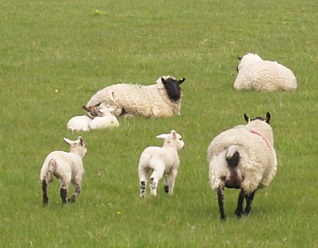 Free range is widely used in districts where fast areas of land are available. The animals are allowed to roam the site with little or no supervision by farmers. Some control is obtained by way of fencing.
Free range is widely used in districts where fast areas of land are available. The animals are allowed to roam the site with little or no supervision by farmers. Some control is obtained by way of fencing.
The land area must be large enough to stock the number of animals and must also be self- sufficient in terms of water and feed. The carrying capacity should not be exceeded. The carrying capacity of a pasture refers to the number of animals which can be grazed on the pasture during the grazing season. If feed is overgrazed by the animals they should move onto another area, either within the fenced zone or to another fenced area. However a correctly managed grazing system should prevent overgrazing.
Hoofed animals and some fowl species are commonly free ranged. Birds however may need to be confined some way to prevent flight. In this case, or for flightless birds, care should be taken against predators.
LARGE SCALE GRAZING
Farming properties in some arid or semi-arid areas are extremely large, measured in terms of square kilometres or miles, rather than acres or hectares. It is often uneconomical to fence such properties into paddocks. Animals are usually stocked at low rates (i.e. relatively few animals per unit area), and animal husbandry operations are kept to a minimum. Livestock may be rounded up (i.e. mustered), periodically (maybe annually), for veterinary treatments, marking or selling.
Mustering on large properties in many countries (for example Australia, the USA and South Africa) has traditionally been done on horseback (which is still widely used), though motorised vehicles and even aircraft are now being increasingly used to aid mustering on large properties.
GRAZING MODIFICATIONS
If a farm has insufficient pasture to meet the needs of its animals, any of the following techniques may be used as a supplement to grazing:
Supplementary feeding
Animals may need supplementary feeding especially in times of drought or flood. They placed into a confined holding paddock may also require additional feeding.
Stabling
In some areas, animals may be brought under cover (e.g. in a barn) over winter. This practice is more common in cold climates (e.g. northern Europe). Animals which are particularly valuable may be stabled during colder (or wet) weather in even countries with milder climates such as Australia.
Agistment
When the available land is either too small for the head population of the animals, or when drought or flood occur, it may be necessary to consider agistment. Stock is taken to other properties where feed is available. Agistment is only used when other possibilities become unviable; given the cost involved, and the stress that transportation can cause animals.
LOT FEEDING
The success of a feedlot operation depends upon careful planning of facilities, to ensure efficient handling of animals, and proper health care. Facilities required may be categorised as follows:
- An open feedlot.
- An open shed and feedlot.
- A feeding shed and lot.
- Confinement areas/stalls.
The facility you plan will depend upon the following:
- Number of animals to be handled.
- Area required per animal.
- Preferred environmental conditions.
- Location of facilities.
- Types of facilities needed.
- Methods for handling feed, water and other materials.
- Available finance.
- Relationship between new and existing facilities.
Open Feedlots
This is a fenced area without any buildings. Cattle are only offered protection with shade trees, windbreaks, fences and/or artificial shade structures. In some countries such as Australia, feedlots are unique in that they provide full shade during the heat of the day.
Cold Confinement Sheds
These are sheds which may be open on one side (i.e. away from prevailing weather).They provide protection from extreme weather, but the inside temperature may not vary significantly from the outside.
Warm Confinement Sheds
These are closed, insulated buildings, which are kept warmer than outside temperatures during winter.
SITE REQUIREMENTS FOR FEEDLOTS
The soil must be well drained to prevent puddling in wet weather. There should be a slope of 2-3% to remove excess water. (Sheds may alternatively have slotted floors). The site should be oriented to provide protection from prevailing weather extremes. It should be located well clear of water courses or dams, so that run off does not contaminate water sources. Access should be considered: cattle, machinery and feed supplies need to be easily moved.
MANAGING CATTLE IN LOTS
Only healthy animals should be put into confined areas because:
- Sick animals are unlikely to achieve rapid growth desired from a lot feeding situation.
- Diseased animals are more likely to infect healthy animals when kept close together.
To maximise cattle health, shade must be provided, and overcrowding avoided. It is also important that feed is free of contaminants (e.g. avoid poultry litter or any faeces).
Different types of cattle can be put in the same pen, provided the pen is large, but in more confined situations, the following animals should not be mixed:
- Cattle with and without horns.
- Cattle of different sizes.
- Cattle of different sexes.
When any cattle are put together, an order of dominance will develop. The farmer will try to minimise this affect by grouping (as much as possible), animals of equal status.
Care should be taken to minimise any stress on animals, as stress will affect performance. If cattle are to be handled for dipping, weighing, moving etc., then this should be done quietly, without any shouting or fuss, observing the following:
Before placing in a lot, be sure all animals are up to date with treatments against disease or pests (e.g. dipping, vaccinations, etc.).
Problems with Lot Fed Cattle
Lot fed cattle can develop various health problems, including the following:
Acidosis
This is caused by the animal eating large amounts of grain. It often occurs when a diet is first changed; within a few days of being introduced to lot feeding.
Symptoms include loss of appetite, lack of energy, digestive tract movement slows; breathing becomes shallow and faster than normal, faeces contains undigested grain, and is foul smelling.
Laminitis
This occurs sometimes with high maize, low roughage diet. European breeds of cattle are less susceptible. Other breeds such as Brahman are more susceptible.
Symptoms include tender feet, animals frequently lie down, and weight gains may be reduced as the condition becomes more severe.
Bloat
This is a swelling of the rumen (one of four stomachs), caused because the animal cannot release gasses formed in the rumen. Bloat may be caused by:
- Gases formed naturally during digestion become trapped in the stomach.
- Paralysis of the stomach caused by ingesting toxins (e.g. a poisonous plant).
- Adhesions of the stomach caused by ingesting a nail or piece of wire.
- Obstructions caused by eating foreign objects such as plastic.
- Lying in an unnatural position (such as flat on the side).
POULTRY
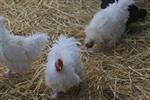 Chickens are the most common poultry produced, and the most common production method is in cages.
Chickens are the most common poultry produced, and the most common production method is in cages.
Battery hens are kept in cages either singularly, in multiples or in colonies. Single cages may be in single rows, back-to-back, stair-step or double-deck. The stair-step arrangement is considered most profitable, as birds beneath do not get fouled by birds above. Multiple bird cages and colony cages reduce the overhead costs per bird, increasing profitability.
Light intensity and day length can affect food intake, and hence may affect production of both meat and eggs. As such, artificial lighting is commonly used in commercial poultry farms. When designing the poultry sheds consider:
- Health of poultry and humans.
- Costs.
- Maximum labour requirements.
- Maximum working efficiency.
- Feeding methods.
- Egg/meat collection methods.
- Lighting.
- Degree of mechanisation.
ANIMAL BREEDING/STUD OPERATIONS
Breeding of various animals on the farm may require extensive structures or very little.
Fish and Aquaculture
Structures required generally are already present in the aquaculture farm or any need to be constructed specific for the fish /aquatic species. A pond or tank is frequently used for hatching and spawning. The same tank may be suitable for growing on. Hatchings are best kept apart for mature fish as many species are carnivorous. Each aquatic species has its own requirements for breeding.
Poultry
Mating pens are used ensuring the right number of birds within, otherwise matings will be reduced. Mating begins about two weeks prior the eggs are to be delivered to the hatchery.
Eggs should be gathered carefully 3 or 4 times a day and stored at 10o to 15oC at 80% humidity. Pack the eggs with the large end up. Eggs should be fumigated to eliminate diseases.
Horses
Stallions are usually kept in a stable with run out yard mares, and run in one or more groups. Mares that are particularly valuable may also be stabled. Stallions are brought to mares in the yards for teasing, and for service.
Swine
The ratio of boar to sow is important to maintain semen production. For one boar under 12 months, use 4-6 sows. Use 8-10 sows if the boar is over 12 months. Too many services in a short period will reduce sex drive of the boar. Conception may be increased by rotating the males with the sows to achieve multiple matings.
CATTLE SEMEN PRODUCTION
Well grown bulls are suitable for breeding at 15 to 18 months of age. It is advised the fertility of the bull be checked before breeding season begins.
In pasture a young bull may only service 10 to 15 cows. If placed in a pen then servicing rate goes up to 20 cows. A mature bull can service up to 30 cows on pasture or up to 50 cows in a breeding pen.
Artificial Insemination (AI) is the placing of semen/sperm into the female reproductive tract excluding natural processes. The semen is collected from bulls which are enticed to mount a dummy or live animal, and ejaculate into a vial. The semen is then cooled for use with appropriate cows on heat, or can be stored to -195.5 degrees celsius for longer periods.
AI allows for improved breeding programs. The cow is inseminated by guiding the inseminating tube (which is placed into the vagina) into the cervix by means of a gloved hand inserted into the rectum.
CROPPING SYSTEMS
Broad Acre Farming
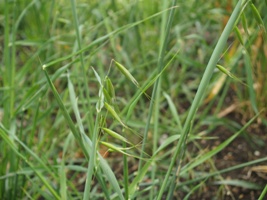 Crops such as grain and legumes are generally broad acre farmed. Fibre crops such as cotton are also broad acre farmed. This system results in a monoculture where pests and disease may be troublesome, however maintenance and harvesting of the crop is much simpler. Technology has aided the growing and harvesting of crops grown in this system. Machinery increased the efficiency of sowing and harvesting the yield.
Crops such as grain and legumes are generally broad acre farmed. Fibre crops such as cotton are also broad acre farmed. This system results in a monoculture where pests and disease may be troublesome, however maintenance and harvesting of the crop is much simpler. Technology has aided the growing and harvesting of crops grown in this system. Machinery increased the efficiency of sowing and harvesting the yield.
Pasture crops may be broad acre farmed for the purpose of producing hay and straw for the off season period or for drought.
Hay can be defined as shoots and leaves of forage plants that are harvested and dried for use as feed for animal stock. Hay quality will vary depending upon plant material used as the raw product. Grasses and/or legumes are predominantly used. It may be stored loose, chopped, baled, cubed or rolled.
Silage is green chopped forage allowed to ferment under anaerobic conditions and feed to stock animals. Silage can take two to three weeks to mature, but can be stored for many years provided air is kept out.
Row Cropping
Paddocks are tilled and rows or mounds made which are then seeded. The result is rows of crop plants. Row cropping is used widely by horticultural farmers producing vegetables and cut flowers.
Crop Rotation
Crop rotation refers to the practice of changing the crop after the previous crop has been harvested. The development of this technique came about due to repetitive use of one piece of land for the same crop over many years produced poor yields. By changing the crop, different nutrients may be used, different cultural practices are used and existing pests may be repelled.
One concept of crop rotation is:
- Season 1: leaf crops (e.g. lettuce, silver beet, onions etc.).
- Season 2: fruit/seed vegetables (e.g. tomatoes, corn, capsicum, etc.).
- Season 3: crucifers (e.g. cabbage, cauliflower, radishes, etc.).
- Season 4: root crops (e.g. carrots, potatoes, parsnip etc.).
Crop rotation is usually practised by horticultural farmers, hobby farmers and home gardeners.
Hydroponic Production
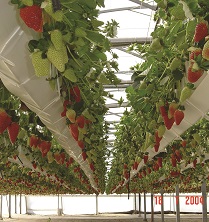 This involves growing plants in an inert medium (i.e. the roots sit in water, a granulated material which is totally sterile). A carefully balanced solution of nutrients is added to the roots to provide moisture and nutrition needed for growth. In essence, hydroponics allows a farmer to take more control over plant growth, and minimise losses due to pests and diseases. It is an intensive form of cropping, not suited to everything; but it can be an appropriate way to increase productivity when land is limited.
This involves growing plants in an inert medium (i.e. the roots sit in water, a granulated material which is totally sterile). A carefully balanced solution of nutrients is added to the roots to provide moisture and nutrition needed for growth. In essence, hydroponics allows a farmer to take more control over plant growth, and minimise losses due to pests and diseases. It is an intensive form of cropping, not suited to everything; but it can be an appropriate way to increase productivity when land is limited.
Hydroponics has been successfully used to grow fodder for livestock, and is commonly used in some sections of the vegetable, berry fruit and cut flower industries.
Polyculture
Theoretically, it is better for the long term welfare of the land to avoid a monoculture approach to farming. Monocultures tend to utilise the same nutrients from the soil and deposit the same "pollutants" into the soil; causing nutrient deficiencies and pollutant toxicities. When several different plants, and/or animals are growing together, the waste products of one will often be used by another; and the nutrients used by one, may be replenished by the activity of another.
Most farms still operate as a monoculture (or series of monocultures); but problems associated with such practices are increasingly having an impact on the financial long term viability of those farms.
Some polyculture options which have benefited farms to date include:
Agroforestry - growing trees in paddocks provide shade for animals, then eventually the trees can be harvested and sold for timber, woodchip or firewood.
Animals grazing in orchards - sheep, free range poultry or other animals can be grazed below fruit or nut trees.
Alternative farmers increase the efficiency of their land by diversifying harvestable product. One example is to have a marketable plant species (e.g. pecan nut trees) and allow fowl to free-range beneath. Both pecans and fowls are harvestable. It provides a mutually beneficial situation. The trees provide shelter for the birds and the birds return the favour by fertilising the trees, eating suitable insects/pests. To ensure the birds do not eat the nuts, they can be kept locked in pens till after harvest.
Almost any animal can be used in this type of production system; cows, sheep, deer, etc. are all possibilities. The farmer only needs to ensure the animals will not eat or destroy the trees/plants, and that the plants are not toxic to the animals.
Inter row cropping
Inter-row cropping involves establishing the principle crop in rows then to plant another crop between them. A slow crop such as corn may be planted with lettuce between the rows. Compatibility of the two crop species is important. The following questions will need to be answered for each combination.
- Do they need the same amount of watering and fertilising?
- How will light affect the two crops?
- Is one root system more dominant than the other?
Long term fruit tree crops may be planted with vegetables between the rows. In this case, consider the spread of the tree roots. Most tree fruiting plants do not appreciate root competition. Spacing used in most fruit tree orchards adequately allows for a row of vegetables to be planted.
LEARN MORE
If you work on a farm or manage a farm, learn with ACS to improve your knowledge and skills. Take a look at our wide range of Agriculture Courses, with a choice of study levels and wide array of subjects covered. Subjects include Hydroponics, Irrigation, Organic Farming, and much more. A selection of available courses are shown, with links to the course pages, at the bottom of this page.
If you have any QUESTIONS or need help deciding what course to study, please do get in touch with our Agriculture specialists today - they will be more than happy to help you.
[21/12/2025 09:19:59]
More from ACS
Directory to dozens of courses include short courses, certificates and diplomas.
This courses includes the PDC (Permaculture Design Certificate); and more.
Directory to short courses and certificates -hydroponics for amateurs and professionals